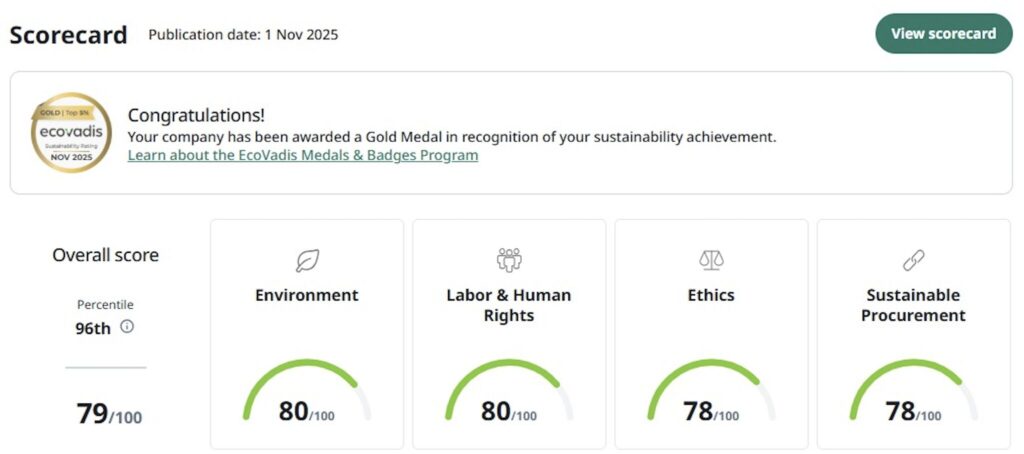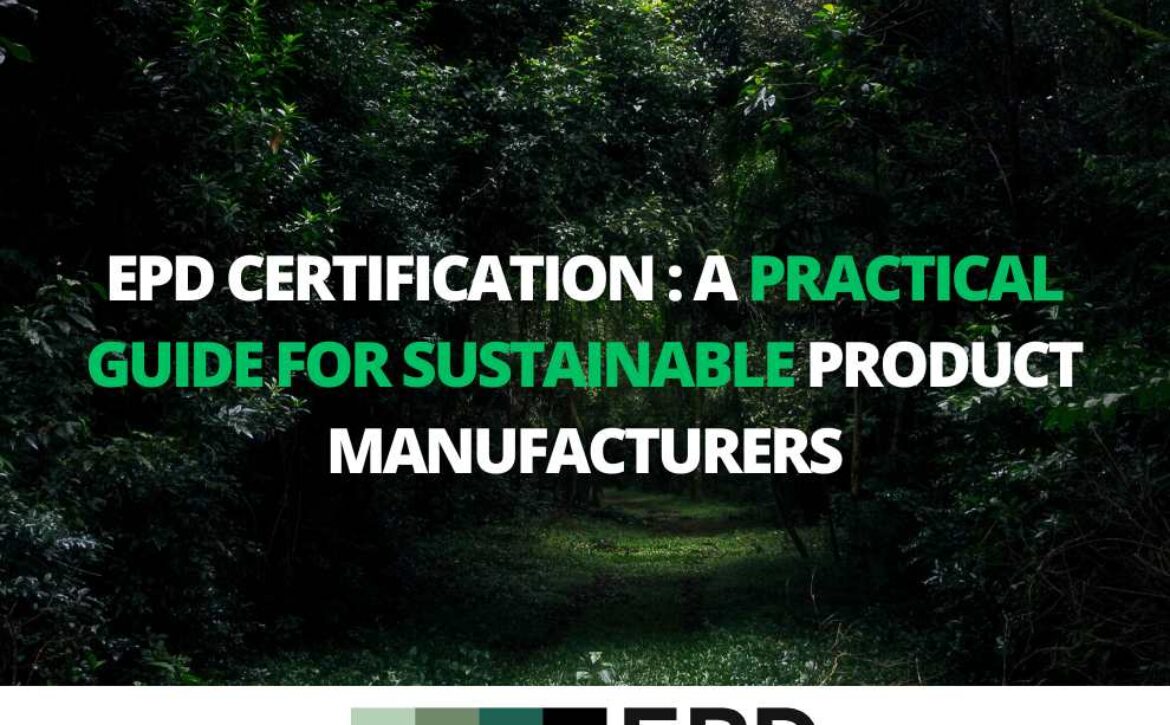What Does an EcoVadis Consultant Do and Why Your Business Needs One
What Does an EcoVadis Consultant Do and Why Your Business Needs One
Sustainability has become a key driver of business success across the Middle East and beyond. In regions like Saudi Arabia, where environmental responsibility and ethical supply chains are becoming central to national and corporate agendas, companies are increasingly evaluated not only on their financial performance but also on how responsibly they operate.
Among the many frameworks available, EcoVadis has emerged as a global benchmark for assessing corporate sustainability.
However, the EcoVadis assessment process can be detailed and demanding. Understanding the requirements, preparing evidence, and aligning with international sustainability standards often requires expert guidance. This is where partnering with an experienced EcoVadis consultant can make a measurable difference.
Why EcoVadis Ratings Matter
EcoVadis is the world’s most widely used platform for evaluating a company’s environmental, social, and ethical performance. It assesses organizations based on four key pillars:
Environment – energy, emissions, and resource efficiency
Labor & Human Rights – working conditions, diversity, and employee welfare
Ethics – anti-corruption, transparency, and fair practices
Sustainable Procurement – supplier management and responsible sourcing
A strong EcoVadis rating can enhance brand reputation, build trust with clients, and improve supply chain credibility.
In Saudi Arabia and across the GCC, many government projects and private clients now require their suppliers to maintain a verified sustainability rating — making EcoVadis an essential factor in qualifying for new contracts.
Understanding the Role of an EcoVadis Consultant
Achieving a high EcoVadis score is not just about submitting documents — it’s about demonstrating a company’s genuine commitment to sustainability. An EcoVadis consultant brings both technical expertise and strategic insight to this process.
Consultants begin by reviewing your company’s existing sustainability practices, policies, and certifications. They identify strengths, pinpoint areas for improvement, and guide you through preparing the right documentation for submission. This includes environmental policies, HR procedures, ethical codes, supplier questionnaires, and more.
Beyond compliance, a skilled consultant helps organizations design long-term improvement strategies — aligning sustainability goals with business growth. With their support, companies can confidently approach EcoVadis assessments and build a clear roadmap toward achieving higher ratings, such as Silver, Gold, or Platinum.
How an EcoVadis Consultant Supports Your Business
1. Conducts a Comprehensive Gap Analysis
Consultants assess where your organization currently stands in comparison to EcoVadis criteria. This helps identify what’s missing and sets clear priorities for improvement before submission.
2. Streamlines Documentation and Evidence
One of the biggest challenges companies face is preparing the right documentation. Consultants help organize policies, reports, and certifications to ensure that evidence aligns precisely with EcoVadis expectations.
3. Builds a Strategy for Score Improvement
EcoVadis is not just about policies — it values measurable actions. Consultants guide businesses in implementing sustainability programs, defining KPIs, and strengthening supplier evaluations that directly impact scoring.
4. Simplifies the Submission Process
Navigating the EcoVadis online platform can be tedious. Consultants review every section of your submission, ensuring accuracy, consistency, and completeness.
5. Provides Post-Assessment Insights
Once the results are released, consultants help interpret your scorecard and recommend targeted actions to improve in the next assessment cycle. This ensures continuous progress instead of one-time compliance.
Why Your Business Should Partner with an EcoVadis Consultant
Expert Knowledge Saves Time
A consultant helps avoid trial-and-error during the assessment, saving valuable time and preventing documentation rework.
Faster and More Accurate Results
With hands-on experience in EcoVadis submissions, consultants know which areas carry the most weight and how to optimize each section effectively.
Avoids Costly Mistakes
Many companies lose points due to missing, outdated, or irrelevant evidence. Consultants ensure every document submitted supports your score.
Drives Competitive Advantage
A higher EcoVadis rating strengthens brand credibility, supports tender participation, and improves relationships with sustainability-driven clients.
Creates a Sustainable Business Framework
Instead of treating EcoVadis as a checklist, consultants help embed sustainability practices within your operations — ensuring ongoing improvement and compliance.
Why Businesses Across the Middle East Choose Chiltern TMC
Chiltern TMC has helped over 30 companies across Dubai, Abu Dhabi, and Saudi Arabia achieve EcoVadis Gold and Platinum ratings through structured consulting, documentation support, and sustainability strategy.
We are also proud to hold EcoVadis Platinum status for our own organization, demonstrating the same level of sustainability excellence we deliver to our clients.
As the only EcoVadis-accredited consulting firm in the Middle East, Chiltern TMC combines deep technical knowledge with regional experience — ensuring every client receives globally recognized results backed by credibility, accuracy, and transparency.
How Chiltern TMC Helps Businesses Achieve Better EcoVadis Ratings
At Chiltern TMC, we help organizations strengthen their sustainability performance and gain recognition through higher EcoVadis ratings.
Our team of consultants has supported companies across Saudi Arabia, the UAE, and Europe — helping them move from Bronze to Gold and Platinum through structured improvement programs.
Our approach includes:
Initial Readiness Assessment – evaluating your current standing against EcoVadis criteria.
Evidence Collection and Review – preparing well-documented, audit-ready submissions.
Score Improvement Planning – implementing strategies to enhance performance across all four EcoVadis pillars.
Guided Submission Support – ensuring accuracy and completeness during portal submission.
Ongoing Advisory – planning for reassessment and continuous improvement.
Proven Results with Chiltern TMC
Our consulting approach has delivered measurable outcomes.
We recently supported Al Chayah General Trading Co. LLC in achieving an EcoVadis Platinum rating, recognizing their strong sustainability management and ethical business practices.

Similarly, Emirates Computers attained an EcoVadis Gold rating through our focused guidance on policy refinement, documentation, and supplier sustainability.

These results reflect Chiltern TMC’s commitment to helping businesses — in Dubai, Saudi Arabia and beyond — strengthen their sustainability performance and gain recognition on the global stage.
As sustainability continues to shape business opportunities in regions like Saudi Arabia, your EcoVadis rating reflects more than compliance — it shows your company’s values and long-term commitment to responsible growth.
Partnering with an experienced EcoVadis consultant ensures that your sustainability journey is strategic, credible, and aligned with global standards.
At Chiltern TMC, we simplify the complexity of EcoVadis assessments and turn them into clear opportunities for improvement, growth, and recognition.
Ready to strengthen your EcoVadis performance in Saudi Arabia or the GCC?
Reach out to Chiltern TMC’s EcoVadis consulting team today to schedule a readiness assessment and discover how we can help your business move from Bronze to Gold — and beyond.
Written by Ahamed Aasir, Sustainability Marketing Consultant for Chiltern TMC Consultant.
Last Updated: November 14, 2025


